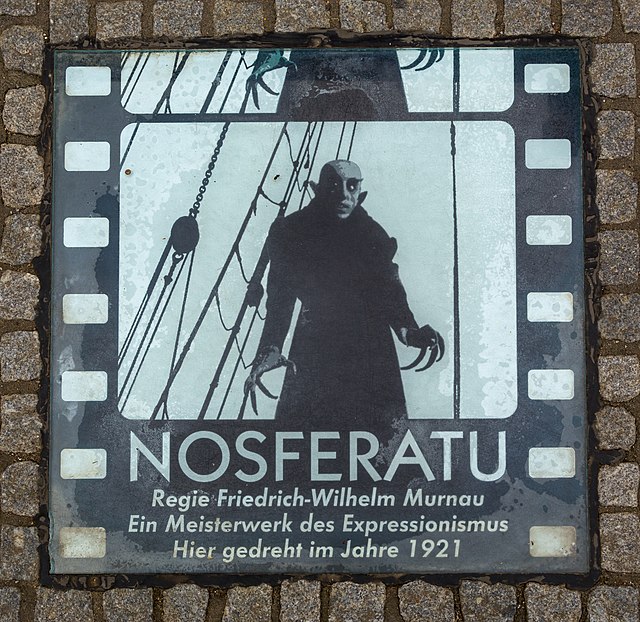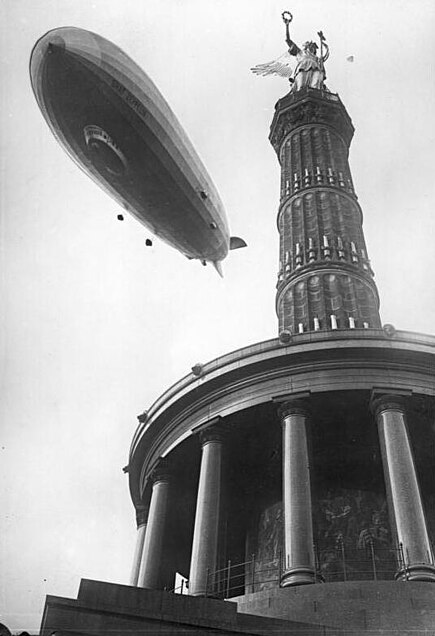German expressionist cinema
German expressionist cinema was a part of several related creative movements in Germany in the early 20th century that reached a peak in Berlin during the 1920s. These developments were part of a larger Expressionist movement in north and central European culture in fields such as architecture, dance, painting, sculpture and cinema.
Paul Wegener as The Student of Prague in a 1913 poster
A poster for the 1920 silent film The Golem: How He Came into the World, starring and co-directed by Paul Wegener and Carl Boese
A commemorative plaque for the 1922 silent film Nosferatu in the market square of Wismar, Germany where some of it was filmed
A frame from director Arthur Robison's 1923 silent film Schatten – Eine nächtliche Halluzination (a.k.a., Warning Shadows)
The Golden Twenties was a particular vibrant period in the history of Berlin. After the Greater Berlin Act, the city became the third largest municipality in the world and experienced its heyday as a major world city. It was known for its leadership roles in science, the humanities, art, music, film, architecture, higher education, government, diplomacy and industries.
Color variations of doors and entrances in the Hufeisensiedlung (1925-1933)
The Europahaus, one of hundreds of cabarets in Weimar Berlin, 1931
Prostitutes buy cocaine capsules from a drug dealer in Berlin, 1930. The capsules sold for 5 marks each.
The Graf Zeppelin flies over the Victory Column, 1928.








